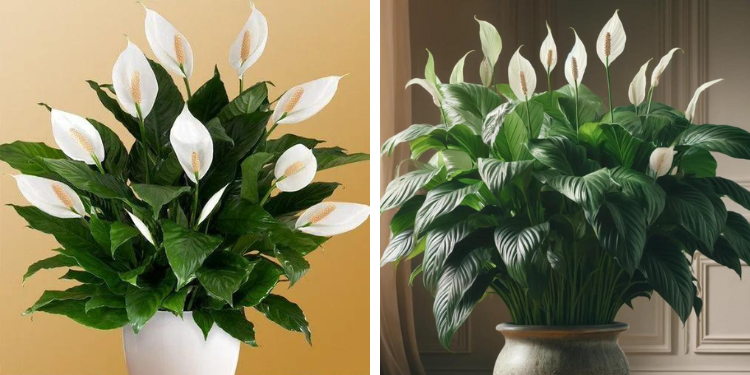Peace lilies are one of the most loved houseplants in the world. Their glossy green leaves and pure white flowers add elegance to any room, and they have a reputation for being easy to grow.
But when it comes to getting them to bloom consistently, most people struggle. You may have a peace lily that looks healthy but hasn’t flowered in years.
That’s where my grandmother’s secret comes in. She had peace lilies blooming every season, and her simple method works just as well today as it did decades ago.
Why Peace Lilies Don’t Always Bloom
One of the main reasons peace lilies frustrate growers is that their needs are often misunderstood.
These plants are native to tropical rainforests where they live in warm, shaded environments with steady moisture and high humidity.
Indoors, we place them in dark corners or water them too heavily, and then wonder why they don’t bloom.
Peace lilies need light, but not direct sunlight. They thrive in bright, indirect light near a north or east-facing window.
When left in deep shade, they survive but rarely produce flowers. Overwatering is another issue. The roots enjoy moisture but cannot sit in soggy soil, and waterlogged pots quickly lead to root rot.
Finally, fertilizer plays a big role. Too much nitrogen produces lush leaves, but without enough phosphorus, the plant won’t form flower spikes.
Understanding these basic needs is the foundation of successful care, and it sets the stage for the special technique my grandmother swore by.
The Natural Blooming Cycle
It helps to know what’s normal for peace lilies in the wild. In their native environment, they bloom in spring and early summer, producing the familiar white hooded spathes.
Indoors, you can mimic these cycles and encourage more frequent flowering, but you need to respect the plant’s natural rhythm.
Peace lilies go through periods of growth, rest, and bloom. If you skip the rest period and constantly push for flowers, the plant becomes exhausted and unproductive.
This is the mistake many people make: they keep feeding and watering without pause, not realizing the plant needs downtime to prepare for another cycle of blooms.
My grandmother understood this well, and her trick was all about mimicking nature.
My Grandmother’s Secret for Endless Blooms
Her method was surprisingly simple: she gave her peace lilies a resting phase and then boosted them with the right conditions at the right time.
After the plant finished blooming, she would reduce watering for a month or so. Instead of keeping the soil constantly moist, she let the top inch dry out before watering again.
During this time, she also stopped fertilizing. This gentle stress signaled to the plant that it was entering a “dry season,” just like in the tropics.
After about four to six weeks, she shifted the plant into what she called “bloom mode.” She resumed regular watering, placed the pot in a spot with bright filtered light, and started feeding it every two weeks with a fertilizer higher in phosphorus. Within a month or two, new flower spikes would emerge.
The combination of rest followed by nourishment and light was the key. Instead of treating the peace lily as if it should bloom endlessly, she respected its cycles, and the plant responded with reliable flushes of flowers.
Building the Right Conditions for Success
Of course, the secret only works if the plant’s basic environment is right. Peace lilies love warm temperatures, ideally between 65 and 80 degrees Fahrenheit.
see continuation on next page
